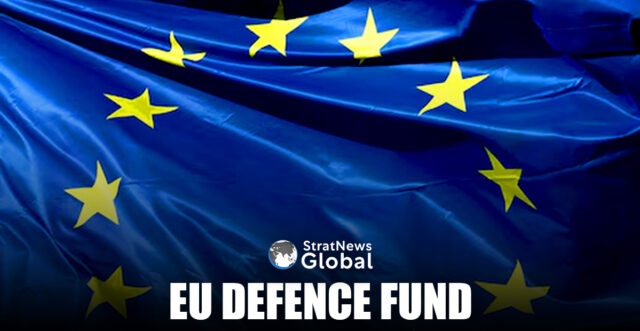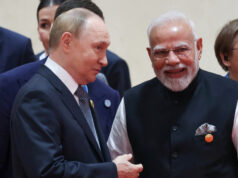European Union (EU) finance ministers began discussions on Saturday on a joint defence fund that would purchase and own military equipment, charging member states a usage fee—an effort to boost defence spending without increasing national debt burdens.
The EU-proposed defence fund, called the European Defence Mechanism, was proposed by the Bruegel think tank in a paper for the ministerial discussions as a way of addressing concerns about how highly indebted countries could pay for costly military equipment.
It is part of a broader European effort to prepare for a potential attack from Russia as EU governments realise they can no longer fully rely on the United States for their security.
“It’s a good starting point for discussion,” Portuguese Finance Minister Joaquim Miranda Sarmento said.
Several other EU countries also expressed initial support, noting that setting up such a fund could be technically relatively simple because it would be based on the model of the euro zone bailout fund, the European Stability Mechanism.
“We’ll still have several issues in terms of the mandate, the finance, the contributions, and the leverage in the market. There are several issues on the financing, but also on the military aspect,” Sarmento said.
The EU is already looking to boost military spending by 800 billion euros ($876 billion) over the next four years by loosening its fiscal rules on defence investment and jointly borrowing for large defence projects against the EU budget.
But such options increase national debt – a worry for many high-debt countries – while the Bruegel idea would provide a way to keep some of the defence investment off national books.
Open To Non-EU Countries
The fund would be established under an intergovernmental treaty and have substantial paid-in and callable capital, allowing it to borrow on the market.
The EDM could admit members from outside the EU, such as Britain, Ukraine or Norway. Because the fund would own the equipment it buys, the debt incurred to pay for it would stay on the EDM’s books, rather than national accounts.
The EDM would also promote a single European market for defence equipment to lower costs and pool resources.
Defence procurement and production in the 27-nation EU is highly fragmented with at least seven different types of tanks, nine types of self-propelled howitzers and seven types of infantry fighting vehicles, which increases costs, reduces interoperability and hinders economies of scale.
“We have to consider the possibility of creating new instruments … to reinforce the defence capacities of Europe,” Sarmento said.
The fund could focus on “strategic enablers” – costly military infrastructure and equipment armies need to operate – now often provided by the United States.
These include joint command and control systems, satellite-based intelligence and communication, development of expensive new weapon systems such as fifth- or sixth-generation fighter jets, integrated weapon systems needed by multiple countries like strategic air defence, strategic large-scale air transport and maritime logistics, missiles and nuclear deterrence.
The Bruegel paper on the EDM said Europe had a chance to reduce its military dependence on the U.S. by 2030 only if it pooled procurement to the greatest extent possible and created a common European defence market, including Britain as a major industrial defence player to boost competition.
($1 = 0.9128 euros)
(With inputs from Reuters)





